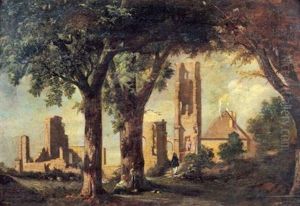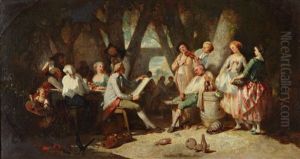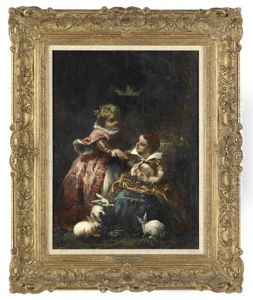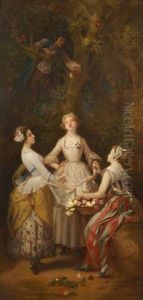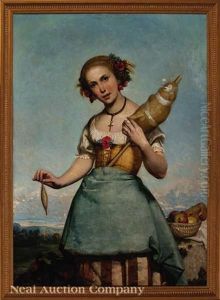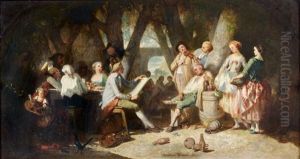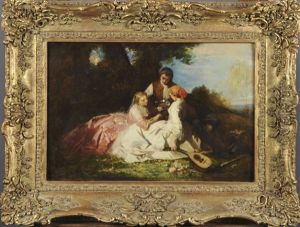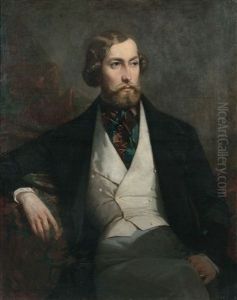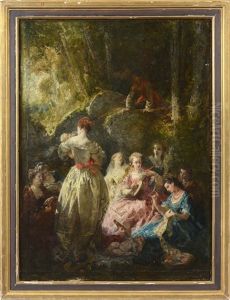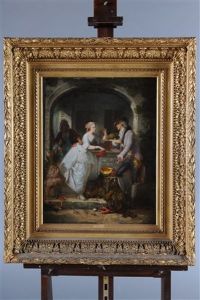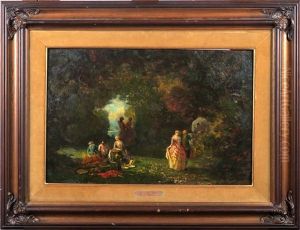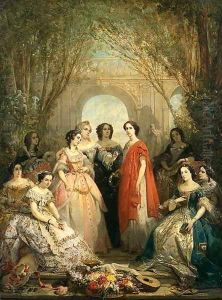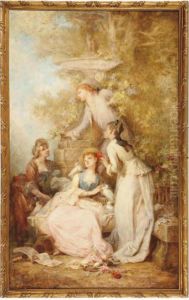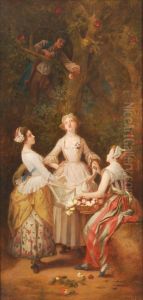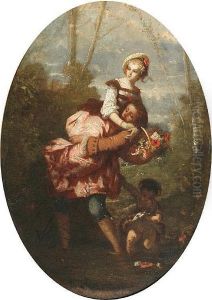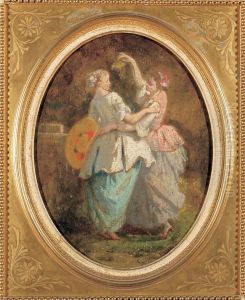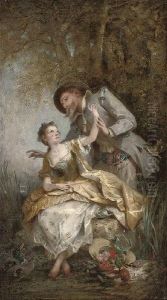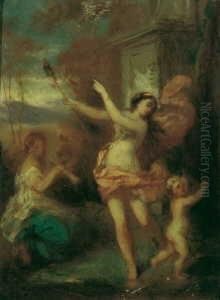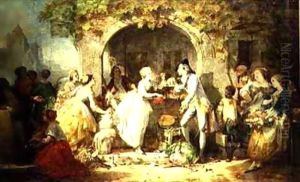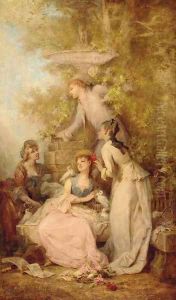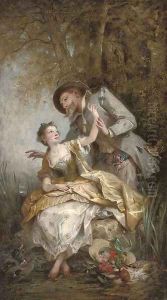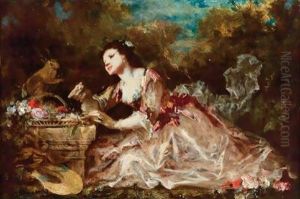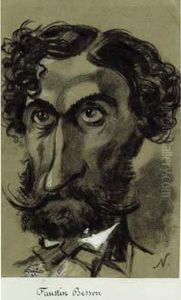Faustin Besson Paintings
Faustin Besson was a French painter known for his romantic and sentimental portrayals of women and historical scenes. Born in the early 19th century, Besson's career spanned a period of significant change in the art world, from the late Romantic era into the beginnings of Impressionism. Despite these changing artistic currents, Besson remained committed to the academic style of painting, focusing on meticulous detail, classical composition, and a rich, vibrant palette.
Besson received his formal art education at the École des Beaux-Arts in Paris, where he studied under renowned artists of the time. His talent was recognized early in his career, and he quickly gained popularity among the French bourgeoisie for his portraits and historical paintings. These works often depicted scenes of chivalry and virtue, reflecting the romantic idealism that was prevalent in the mid-19th century.
Throughout his career, Besson exhibited his work at the Paris Salon, the official art exhibition of the Académie des Beaux-Arts in Paris. His paintings were well received, earning him medals and accolades. His success at the Salon helped to establish his reputation as a leading painter of his era.
Despite his focus on traditional subjects and techniques, Besson's work did show some influence from the emerging Impressionist movement, particularly in his use of light and color. However, he never fully embraced the Impressionist style, preferring instead to remain true to the academic principles he had learned in his youth.
Besson's legacy is that of a skilled painter who captured the essence of 19th-century romanticism in his work. While he may not be as widely recognized today as some of his contemporaries, his contributions to French art during a period of transition are nonetheless significant. His paintings continue to be appreciated for their beauty, technique, and emotional depth.

